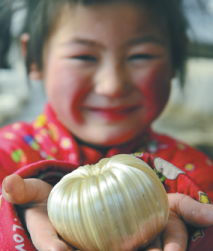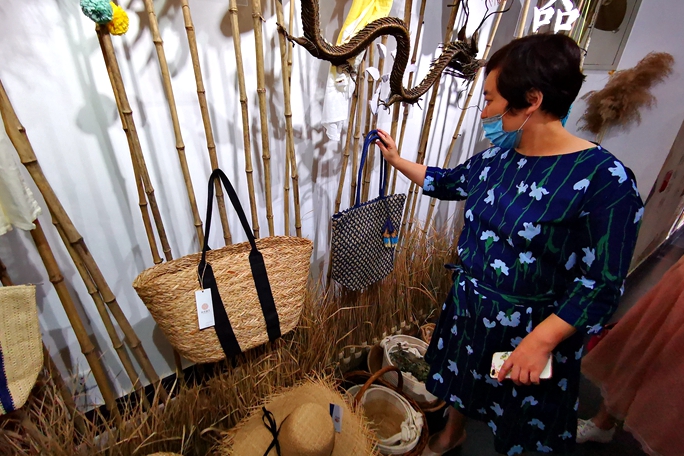Ahead of Spring Festival, the Kitchen God knows all
Zao Jun, the Kitchen God, is a fair-faced celestial who spends only a few days in the heavenly court of the Jade Emperor. For most of the year, he presides over the heart and hearth of earthly households, guarding the livestock, servants, and most of all the cooking stove.
He is privy to the darkest secrets, and he sees all.
He listens to the back room gossip, the quarrels among the womenfolk. He witnesses the trickery of malingering servants, the secret stashes of food hidden for a stolen feast, the cutting of corners in the making of a complicated dish, the whispered rumors, the scandalous truths.
For those reasons, when it is time for him to ascend to make his annual report at the end of the lunar year, the whole household is suddenly alerted to his imminent departure and he is showered with food offerings to put him in the best of moods.
Yes, even the gods must be bribed. In this case, the Kitchen God is sent off with an appropriate feast, all of which will include a final offering that is very sticky, and very sweet.
These sticky sweets, the foolish humans hope, will seal his lips or sweeten his tongue and he will return in the new year with the appropriate bountiful blessings from heaven after making a positive assessment of their merits.
In kitchens large and small all across China, the preparations are starting as Zao Jun travels to report to his boss on the 23rd day of the last lunar month, which falls on Friday this year.
He has been doing this every year for the longest time, as far back as the Xia Dynasty more than 2,000 years even before Christ was born. The Xia was only the first dynasty recorded in Chinese history, so it is likely Zao Jun has been around even longer than that.
Basically, the Kitchen God has been guardian of the stove ever since the Chinese started cooking indoors.
The day of his departure also signals the start of a flurry of preparations for the official arrival of spring a week away. His portrait, probably smoky from standing over the stove for an entire year, will be taken down, smeared with honey and reverently burnt to send him on his way.
In the new year, a brand new portrait will go up on the wall.
Meanwhile, the kitchen and its inhabitants will be pretty busy. There is even a folk rhyme to guide you through it all:
Twenty-third, pumpkin candies,
twenty-fourth, spring cleaning.
Twenty-fifth, tofu time,
twenty-sixth, make meat stew.
Twenty-seventh, kill the rooster,
twenty-eighth, rise the dough.
Twenty-ninth, steam the buns,
New Year's Eve, stay up late,
New Year's Day, celebrate!
Once Zao Jun leaves, replete with sticky pumpkin-shaped candies, the mops and dusters come out the next day and every dustball and each cobweb is industriously swept up and removed.
The more nimble among the girls will start creating beautiful paper-cuts from auspicious red paper. Fruits and flowers, the Chinese characters for happiness and spring, images of deer and bats and other lucky icons-all these will be pasted on windows and walls.
Those with good calligraphy skills will be called upon to write couplets of good wishes that will go across lintels and door frames, all on red paper.
In the meantime, an enormous amount of cooking will be done-starting with the slaughter of the chickens, ducks, pigs and goats to the soaking of soy beans for the making of tofu.
Another important task is the bun making. Steamed buns are very much part of the daily diet all year round, but the buns for the Lunar New Year will be decorated with dates and shaped into impressive works of art.
In my own household, the ayi (housekeeper) and I will be creating flower buns cut from strips of dough artfully twisted into blossoms. Our ayi comes from Henan, where the ladies are really good at turning dough into masterpieces of miniature architecture.
In the southern regions of China, a sticky rice cake called nian gao is also prepared. The basic recipe is golden syrup and glutinous rice flour. Occasionally, red beans and coconut milk are added and the mixture is poured into containers lined with bamboo or coconut leaves. These days, elaborate jelly molds are used to shape the cakes, with fish-shaped molds being the most popular since "fish" is a homophone of "overflowing abundance".
At this time of the year, rituals and symbolic foods become part of the celebrations and even though some may seem to be based simply on superstitions, they are still oddly comforting and very much part of the festivities that make a new lunar year special.
As for the Kitchen God, I'm pretty sure he enjoys the attention he gets every year and he never fails to return for another year listening in on the household secrets.


 Shandong Culture and Tourism Consumption Season
Shandong Culture and Tourism Consumption Season Culture, tourism sectors pick up in Shandong as epidemic wanes
Culture, tourism sectors pick up in Shandong as epidemic wanes

